Crafting Glacial Narratives: Virtual Exploration of Alpine Glacial and Periglacial Features in Preston Park, Glacier National Park, Montana, USA
Abstract
1. Introduction
1.1. The Geoscience Labor Shortage Problem
1.2. Bridging Educational Gaps in Physical Geography to Develop Field Assessment Skills in Interpreting Glacial Environments
1.3. Objective of This Work
2. Part I: Addressing the Theory to Practice Problem in VLE Development
2.1. Towards a Theoretical Framework for VLEs: TREE-PG
2.2. Towards Applied Design for VLEs: VRUI Planning Tool
2.3. Adapting VRUI Orders to a Stepwise Development Process
3. Part II: Implementing TREE-PG in VLE Development to Build Geoscience Field Assessment Skills Using Preston Park, Glacier National Park, Exemplar
3.1. VRUI Order: Core Learning Objectives (CLOs)
- Identify environmental patterns of physical features;
- Develop the connection of earth processes that create these patterns;
- Evaluate the terrain for a visual site assessment of features associated with hazards.
- The Strabo AI refined prompts yielded the following CLOs:
- Identify the environmental patterns of glacial features in an alpine region;
- Analyze the physical geographic processes that create the unique physical features of glacial environments in the alpine region;
- Evaluate the terrain for visual site assessment of features associated with glacier hazards in the alpine region.
3.2. VRUI First Order: Photo Sphere
3.3. VRUI Second Order: Instructional Intervention
3.4. VRUI Third Order: Contextual Application
4. Discussion
4.1. A Reflection on Ethical AI
4.2. Limitations
5. Conclusions and Future Directions
Supplementary Materials
Author Contributions
Funding
Institutional Review Board Statement
Informed Consent Statement
Data Availability Statement
Acknowledgments
Conflicts of Interest
References
- Bureau of Labor Statistics; U.S. Department of Labor; Occupational Outlook Handbook, Geoscientists. Available online: https://www.bls.gov/ooh/life-physical-and-social-science/geoscientists.htm (accessed on 15 July 2024).
- AGI Publishes 2018 Status of the Geoscience Workforce Report. Targeted News Service 2019. Available online: https://link.gale.com/apps/doc/A578717823/STND?u=uphoenix&sid=ebsco&xid=500f18f1 (accessed on 15 July 2024).
- Wilson, C. Status of the Geoscience Workforce 2018; American Geosciences Institute: Alexandria, VA, USA, 2018; Available online: https://store.americangeosciences.org/status-of-the-geoscience-workforce-report-2018-digital-edition.html (accessed on 15 July 2024).
- Shafer, G.W.; Viskupic, K.; Egger, A.E. Critical workforce skills for bachelor-level geoscientists: An analysis of geoscience job advertisements. Geosphere 2023, 19, 628–644. [Google Scholar] [CrossRef]
- Kelly, J.; Gielstra, D.; Oberding, T.J.; Bruno, J.; Hadley, S. Uniting academia and industry to bridge the skills gap: Incorporating industry advisory councils in curriculum-to-careers programmatic mapping in undergraduate environmental science programs. Ind. High. Educ. 2024, 38, 112–123. [Google Scholar] [CrossRef]
- Donald, W.E. Merit beyond metrics: Redefining the value of higher education. Ind. High. Educ. 2024, 09504222241264506. [Google Scholar] [CrossRef]
- Wilson, H.; Leydon, J.; Wincentak, J. Fieldwork in geography education: Defining or declining? The state of fieldwork in Canadian undergraduate geography programs. J. Geogr. High. Educ. 2017, 41, 94–105. [Google Scholar] [CrossRef]
- Special Report on the Ocean and Cryosphere in a Changing Climate. Intergovernmental Panel on Climate Change. 2019. Available online: https://www.ipcc.ch/srocc/ (accessed on 24 July 2024).
- Hope, M. The importance of direct experience: A philosophical defence of fieldwork in human geography. J. Geogr. High. Educ. 2009, 33, 169–182. [Google Scholar] [CrossRef]
- Gielstra, D.; Moorman, L.; Kelly, J.; Schulze, U.; Resler, L.M.; Cerveny, N.V.; Gielstra, J.; Bryant, A.; Ramsey, S.; Butler, D.R. Designing virtual pathways for exploring glacial landscapes of Glacier National Park, Montana, USA for physical geography education. Educ. Sci. 2024, 14, 272. [Google Scholar] [CrossRef]
- Bos, D.; Miller, S.; Bull, E. Using virtual reality (VR) for teaching and learning in geography: Fieldwork, analytical skills, and employability. J. Geogr. High. Educ. 2022, 46, 479–488. [Google Scholar] [CrossRef]
- Radianti, J.; Majchrzak, T.A.; Fromm, J.; Wohlgenannt, I. A systematic review of immersive virtual reality applications for higher education: Design elements, lessons learned, and research agenda. Comput. Educ. 2020, 147, 103778. [Google Scholar] [CrossRef]
- Marougkas, A.; Troussas, C.; Krouska, A.; Sgouropoulou, C. Virtual reality in education: A review of learning theories, approaches and methodologies for the last decade. Electronics 2023, 12, 2832. [Google Scholar] [CrossRef]
- Kelly, J.; Edgcomb, A.; Bruno, J.; Gordon, C.; Vahid, F. Theory to practice: Reducing student attrition in online undergraduate math. IJRES 2022, 8, 187–206. [Google Scholar] [CrossRef]
- Greener, S.L. Plasticity: The online learning environment’s potential to support varied learning styles and approaches. Campus-Wide Inf. Syst. 2010, 27, 254–262. [Google Scholar] [CrossRef]
- Kelly, J. Translating Research in Environmental Education (TREE) Conceptual Framework. 2021. Available online: https://www.researchgate.net/publication/375958199_Translating_Research_in_Environmental_Education_TREE_Conceptual_Framework?channel=doi&linkId=656502d4b1398a779dbe236c&showFulltext=true (accessed on 24 July 2024).
- Vygotsky, L. Mind and Society: The Development of Higher Psychological Processes; Harvard University Press: Cambridge, MA, USA, 1978. [Google Scholar]
- Carey, S. Sources of conceptual change. In Conceptual Development: Piaget’s Legacy; Scholnick, E.K., Nelson, K., Miller, P., Eds.; Lawrence Erlbaum Associates: Mahwah, NJ, USA, 1999; Volume 70, pp. 293–326. [Google Scholar]
- Chinn, C.A.; Brewer, W.F. The role of anomalous data in knowledge acquisition: A theoretical framework and implications for science education. Rev. Educ. Res. 1993, 63, 1–49. [Google Scholar] [CrossRef]
- Strike, K.A.; Posner, G.J. A revisionist theory of conceptual change. In Philosophy of Science, Cognitive Psychology, and Educational Theory and Practice; SUNY Press: Albany, NY, USA, 1992; pp. 147–176. [Google Scholar]
- Chi, M.T.H. Three types of conceptual change: Belief revision, mental model transformation, and categorical shift. In International Handbook of Research on Conceptual Change; Vosniadou, S., Ed.; Routledge: New York, NY, USA, 2008. [Google Scholar]
- Marsh, H.W.; Shavelson, R. Self-concept: Its multifaceted, hierarchical structure. Educ. Psychol. 1985, 20, 107. [Google Scholar] [CrossRef]
- Bong, M.; Skaalvik, E.M. Academic self-concept and self-efficacy: How different are they really? Educ. Psychol. Rev. 2003, 15, 1–40. [Google Scholar] [CrossRef]
- Davis, G.M.; Hanzsek-Brill, M.B.; Petzold, M.C.; Robinson, D.H. Students’ sense of belonging: The development of a predictive retention model. J. Scholarsh. Teach. Learn. 2019, 19, 117–127. [Google Scholar] [CrossRef]
- Achugar, M.; Schleppegrell, M.; Oteíza, T. Engaging teachers in language analysis: A functional linguistics approach to reflective literacy. Engl. Teach. Pract. Crit. Univ. Waikato 2007, 6, 8–24. [Google Scholar]
- Fang, Z. Scientific literacy: A systemic functional linguistics perspective. Sci. Educ. 2005, 89, 335–347. [Google Scholar] [CrossRef]
- Halliday, M.A.K.; Matthiessen, C.M.I.M. An Introduction to Functional Grammar, 2nd ed.; Arnold: London, UK, 1994. [Google Scholar]
- Holliday, W.G.; Yore, L.D.; Alvermann, D.E. The reading-science learning-writing connection: Breakthroughs, barriers, and promises. J. Res. Sci. Teach. 1994, 31, 877–893. [Google Scholar] [CrossRef]
- Lemke, J.L. Multiplying meaning: Visual and verbal semiotics in scientific text. In Reading Science: Critical and Functional Perspectives of Languages of Science; Routledge: New York, NY, USA, 1988; pp. 87–111. [Google Scholar]
- Markman, E. The whole object, the taxonomic, and the mutual exclusivity assumptions as initial constraints on word meaning. In Perspectives on Language and Thought: Interrelations in Development; Bynes, G., Ed.; Cambridge University Press: Cambridge, MA, USA, 1991. [Google Scholar]
- Gibson, J.J. The Ecological Approach to Visual Perception: Classic Edition, 1st ed.; Psychology Press: London, UK, 2014; ISBN 978-1-315-74021-8. [Google Scholar]
- Lave, J.; Wenger, E. Situated Learning: Legitimate Peripheral Participation; Cambridge University Press: New York, NY, USA, 1991. [Google Scholar]
- Dewey, J. The determination of ultimate values or aims through antecedent or a priori speculation or through pragmatic or empirical inquiry. Teach. Coll. Rec. 1938, 39, 471–485. [Google Scholar] [CrossRef]
- Healey, M.; Jenkins, A. Kolb’s experiential learning theory and its application in geography in higher education. J. Geogr. 2000, 99, 185–195. [Google Scholar] [CrossRef]
- Kolb, D.A. Experiential Learning: Experience as the Source of Learning and Development. In Experiential Learning: Experience as the Source of Learning and Development; Pearsons Education Inc.: London, UK, 2015. [Google Scholar]
- Foster, E.; Cerney, D.; Moorman, L.; Cerveny, N.; Gielstra, D. Experiencing Iceland: Immersive professional development to build geography teaching capacity. In Experiential Learning in Geography; Wessel, J.E., Ed.; Springer: Berlin/Heidelberg, Germany, 2021; pp. 77–98. [Google Scholar]
- Wurdinger, S. Using Experiential Learning in the Classroom: Practical Ideas for All Educators; Scarecrow Education: Lanham, MD, USA, 2005. [Google Scholar]
- Carver, R. Theory for practice: A framework for thinking about experiential education. J. Exp. Educ. 1996, 19, 8–13. [Google Scholar] [CrossRef]
- Moore, R.L.; Graefe, A.R. Attachments to recreation settings: The case of rail-trail users. Leis. Sci. 1994, 16, 17–31. [Google Scholar] [CrossRef]
- Semken, S.; Freeman, C.B. Sense of place in the practice and assessment of place-based science teaching. Sci. Ed. 2008, 92, 1042–1057. [Google Scholar] [CrossRef]
- Semken, S.; Ward, E.G.; Moosavi, S.; Chinn, P.W.U. Place-based education in geoscience: Theory, research, practice, and assessment. J. Geosci. Educ. 2017, 65, 542–562. [Google Scholar] [CrossRef]
- Kastens, K.A.; Ishikawa, T. Spatial thinking in geosciences and cognitive sciences. In Earth & Mind: How Geoscientists Think and Learn about the Earth; Geological Society of America: Boulder, CO, USA, 2006. [Google Scholar]
- National Research Council. Learning to Think Spatially: GIS as a Support System in the K-12 Curriculum; National Academies Press: Washington, DC, USA, 2006; p. 11019. ISBN 978-0-309-09208-1. [Google Scholar]
- Uttal, D.H.; Miller, D.I.; Newcombe, N.S. Exploring and enhancing spatial thinking: Links to achievement in science, technology, engineering, and mathematics? Curr. Dir. Psychol. Sci. 2013, 22, 367–373. [Google Scholar] [CrossRef]
- Lauricella, S.; Edmunds, T.K. Ludic pedagogy: Taking a serious look at fun in the COVID-19 classroom and beyond. Educ. Consider. 2022, 48, 1–15. [Google Scholar] [CrossRef]
- Moorman, L.; Cerney, D.; Gielstra, D.; Foster, E.; Villa Cerveny, N. From real to virtual reality using the geographic advantage with emerging technology to pivot an international interdisciplinary experience. Geogr. Teach. 2021, 18, 107–116. [Google Scholar] [CrossRef]
- Cerveny, N.V.; Gielstra, D.; Gielstra, J.; Moorman, L.; Cerney, D.; Foster, E.J. Where is our booth? Clan organization at the Alþingi, Þingvellir, Iceland in virtual reality. Geogr. Teach. 2021, 18, 171–178. [Google Scholar] [CrossRef]
- Agnew, J.A. Place and Politics: The Geographical Mediation of State and Society; Allen and Unwin: Boston, MA, USA, 1987. [Google Scholar]
- United Nations Educational, Scientific and Cultural Organization. Waterton Glacier International Peace Park. Available online: https://whc.unesco.org/en/list/354 (accessed on 24 July 2024).
- Purwar, S. Designing user experience for virtual reality (VR) applications. UX Planet 2019. Available online: https://uxplanet.org/designing-user-experience-for-virtual-reality-vr-applications-fc8e4faadd96 (accessed on 28 July 2024).
- Piff, P.K.; Dietze, P.; Feinberg, M.; Stancato, D.M.; Keltner, D. Awe, the small self, and prosocial behavior. J Pers. Soc. Psychol. 2015, 108, 883–899. [Google Scholar] [CrossRef]
- Keltner, D.; Piff, P.K. Self-transcendent awe as a moral grounding of wisdom. Psychol. Inq. 2020, 31, 160–163. [Google Scholar] [CrossRef]
- Keltner, D. Awe: The New Science of Everyday Wonder and How It Can Transform Your Life; Penguin Press: New York, NY, USA, 2023. [Google Scholar]
- Mary Lou Fulton Teachers College. GeoCivics Resources. Available online: https://www.teachgeocivics.com/contact-1 (accessed on 30 July 2024).
- Es, S.; James, J.; Espinosa-Anke, L.; Schockaert, S. RAGAS: Automated Evaluation of Retrieval Augmented Generation 2023. Available online: https://arxiv.org/abs/2309.15217 (accessed on 28 July 2024).
- Butler, D.R.; Walsh, S.J. Site characteristics of debris flows and their relationship to alpine treeline. Phys. Geogr. 1994, 15, 181–199. [Google Scholar] [CrossRef]
- Butler, D.R.; Malanson, G.P. Site locations and characteristics of miniature patterned ground, Eastern Glacier National Park, Montana, U.S.A. Landform Anal. 1999, 2, 45–49. [Google Scholar]
- Gielstra, D.; Butler, D.R.; Cerveny, N.V.; Gielstra, J. GeoEPIC. Available online: https://geoepic.app/lessons/field-trip-periglacial-and-glacial-features-of-preston-park (accessed on 28 July 2024).
- Butler, D.R.; Malanson, G.P.; Resler, L.M. Turf-banked terrace treads and risers, turf exfoliation and possible relationships with advancing treeline. Catena 2004, 58, 259–274. [Google Scholar] [CrossRef]
- Porfeli, E.J.; Lee, B. Career development during childhood and adolescence. New Dir. Youth Dev. 2012, 2012, 11–22. [Google Scholar] [CrossRef]
- Marin-Spiotta, E.; Diaz-Vallejo, E.J.; Barnes, R.T.; Mattheis, A.; Schneider, B.; Berhe, A.A.; Hastings, M.G.; Williams, B.M.; Magley, V. Exclusionary behaviors reinforce historical biases and contribute to loss of talent in the earth sciences. Earth’s Future 2023, 11, e2022EF002912. [Google Scholar] [CrossRef]
- Chiarella, D.; Vurro, G. Fieldwork and disability: An overview for an inclusive experience. Geol. Mag. 2020, 157, 1933–1938. [Google Scholar] [CrossRef]
- Jameson, M.M.; Sexton, J.; London, D.; Wenner, J.M. Relationships and gender differences in math anxiety, math self-efficacy, geoscience self-efficacy, and geoscience Interest in introductory geoscience students. Educ. Sci. 2024, 14, 426. [Google Scholar] [CrossRef]
- Seale, J. When digital capital is not enough: Reconsidering the digital lives of disabled university students. Learn Media Technol. 2013, 38, 256–269. [Google Scholar] [CrossRef]
- Ng, C.F. The physical learning environment of online distance learners in higher education—A conceptual model. Front. Psychol. 2021, 12, 635117. [Google Scholar] [CrossRef]
- Torres, K.M.; Statti, A. Learning across borders through immersive virtual technologies. Int. Res. Rev. 2022, 12, 18–32. [Google Scholar]
- Organization for Economic Co-Operation and Development. Building Digital Workforce Capacity and Skills for Data-Intensive Science; OECD Science, Technology and Industry Policy Papers; Organization for Economic Co-Operation and Development: Paris, France, 2020; Volume 90. [Google Scholar]
- Lee, D.-M. The potential and merits of narrative-based virtual fieldwork in preservice geography teacher education. Educ. Sci. 2023, 13, 259. [Google Scholar] [CrossRef]

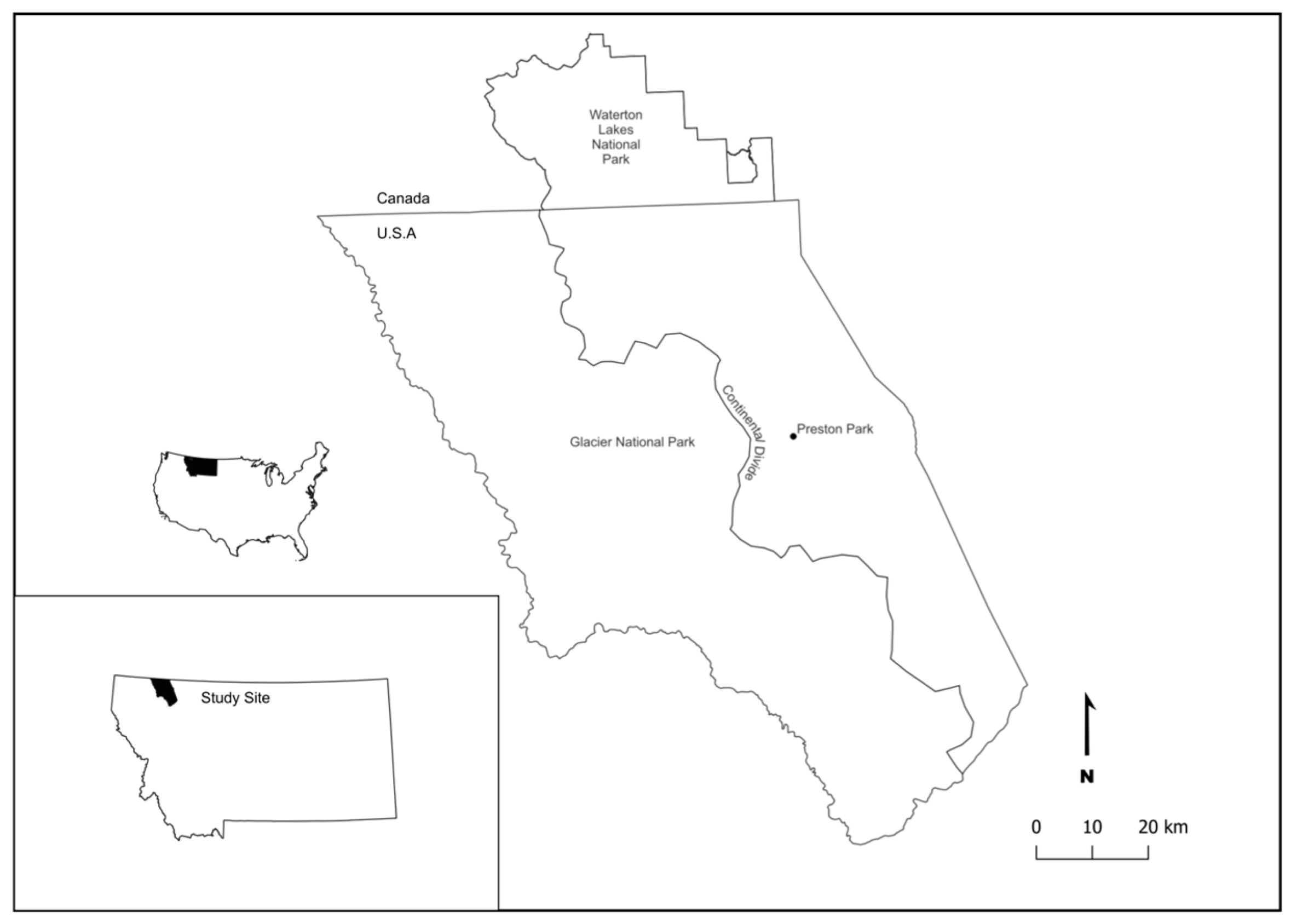
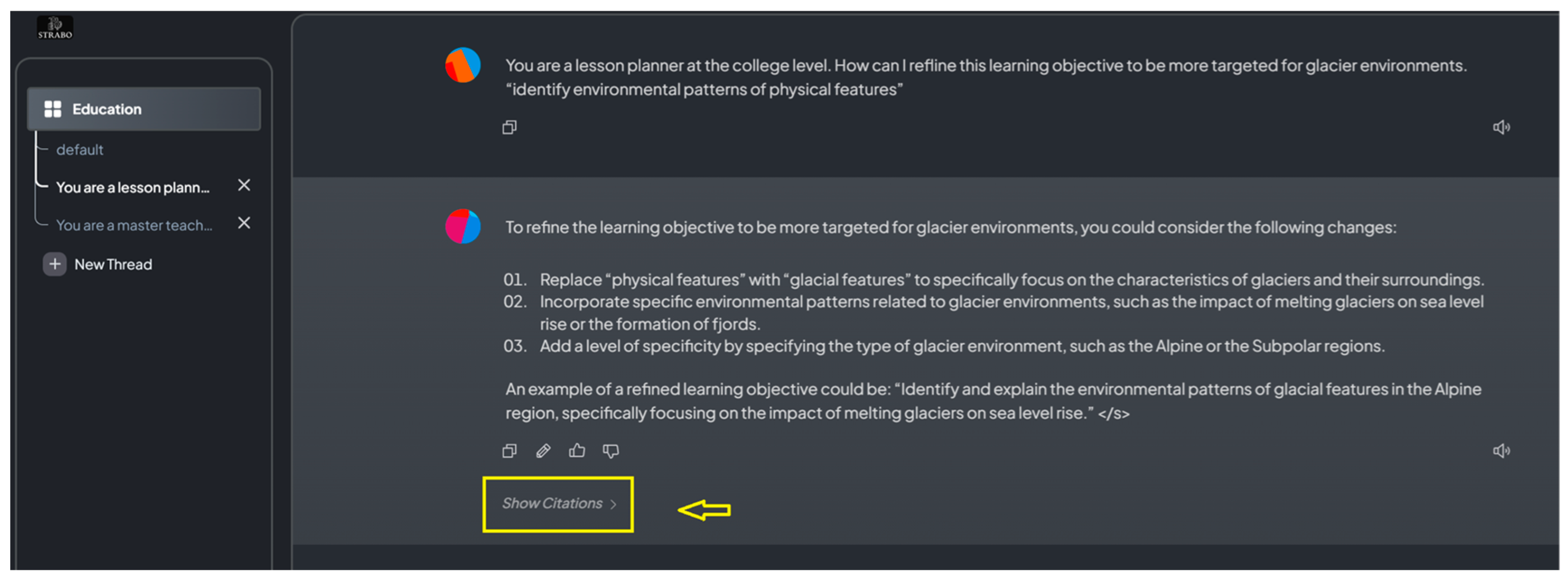
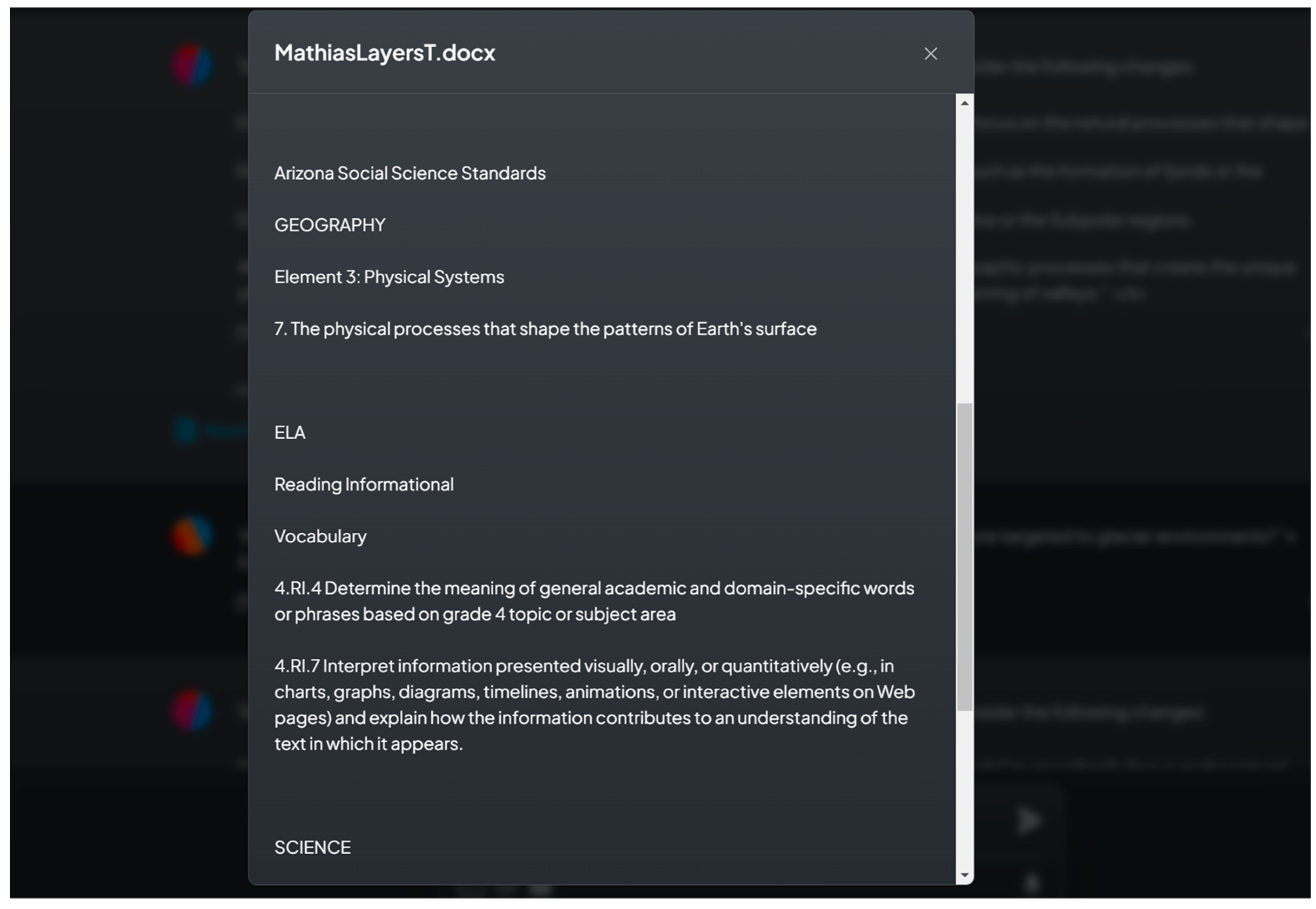
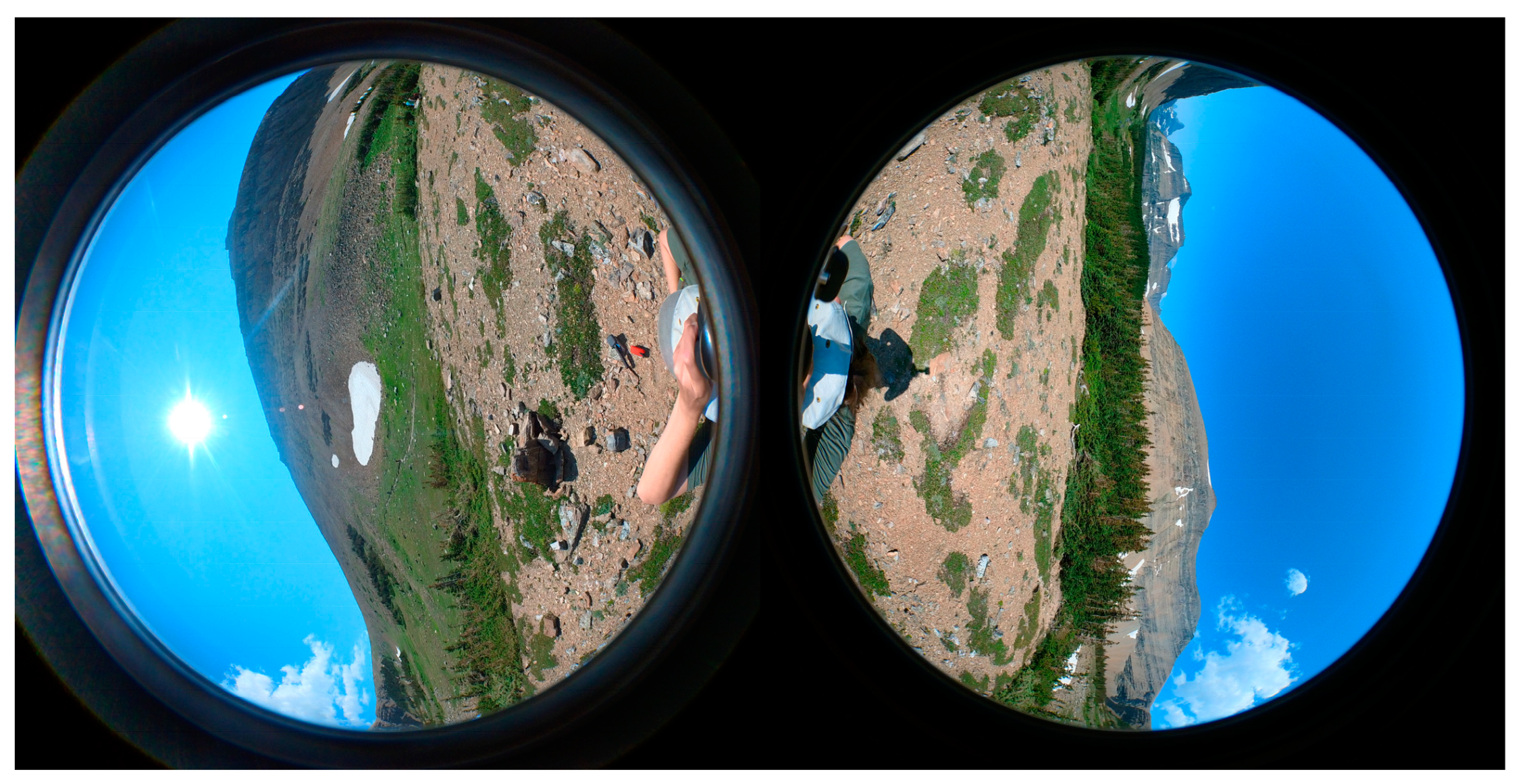
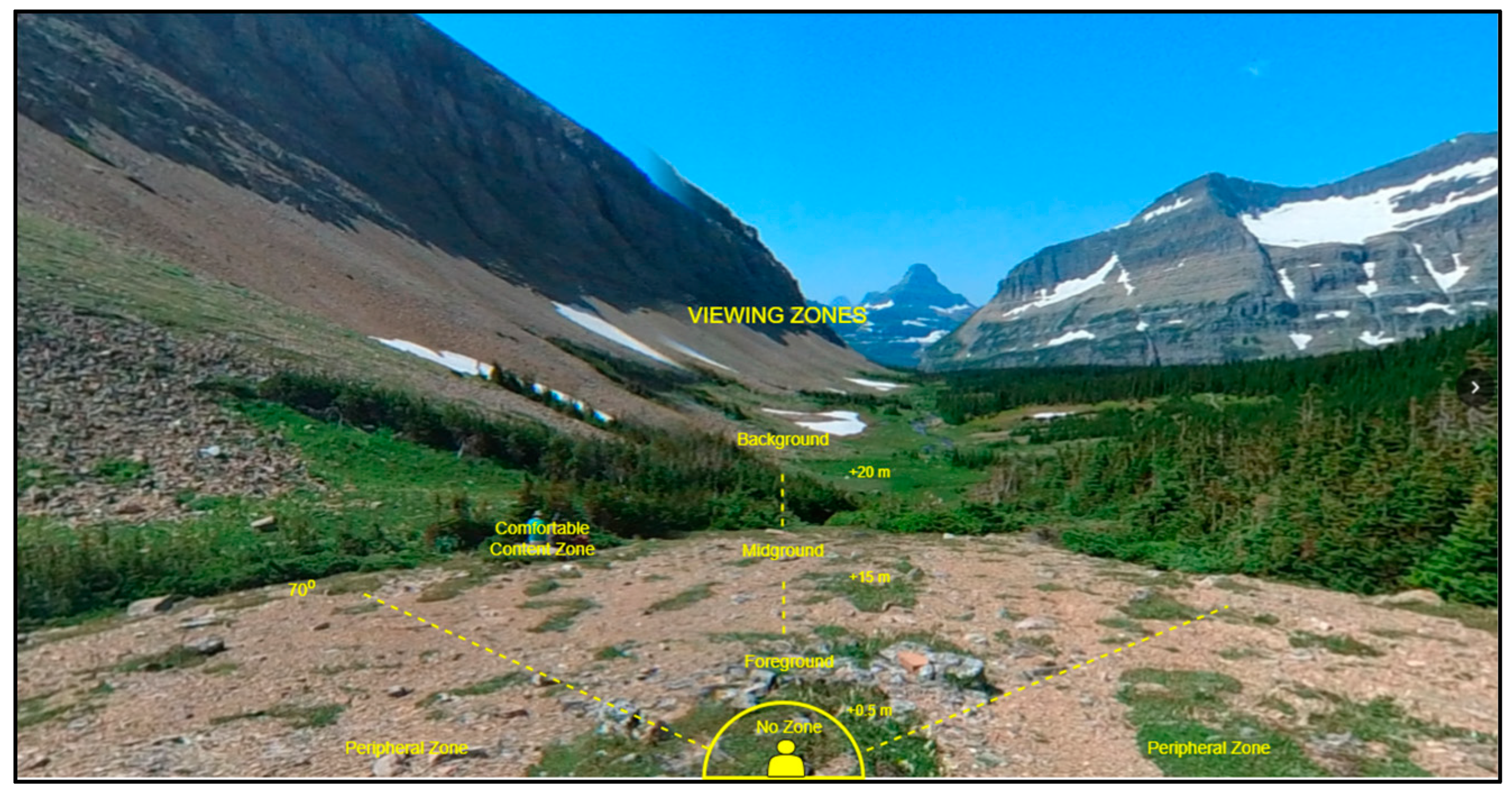
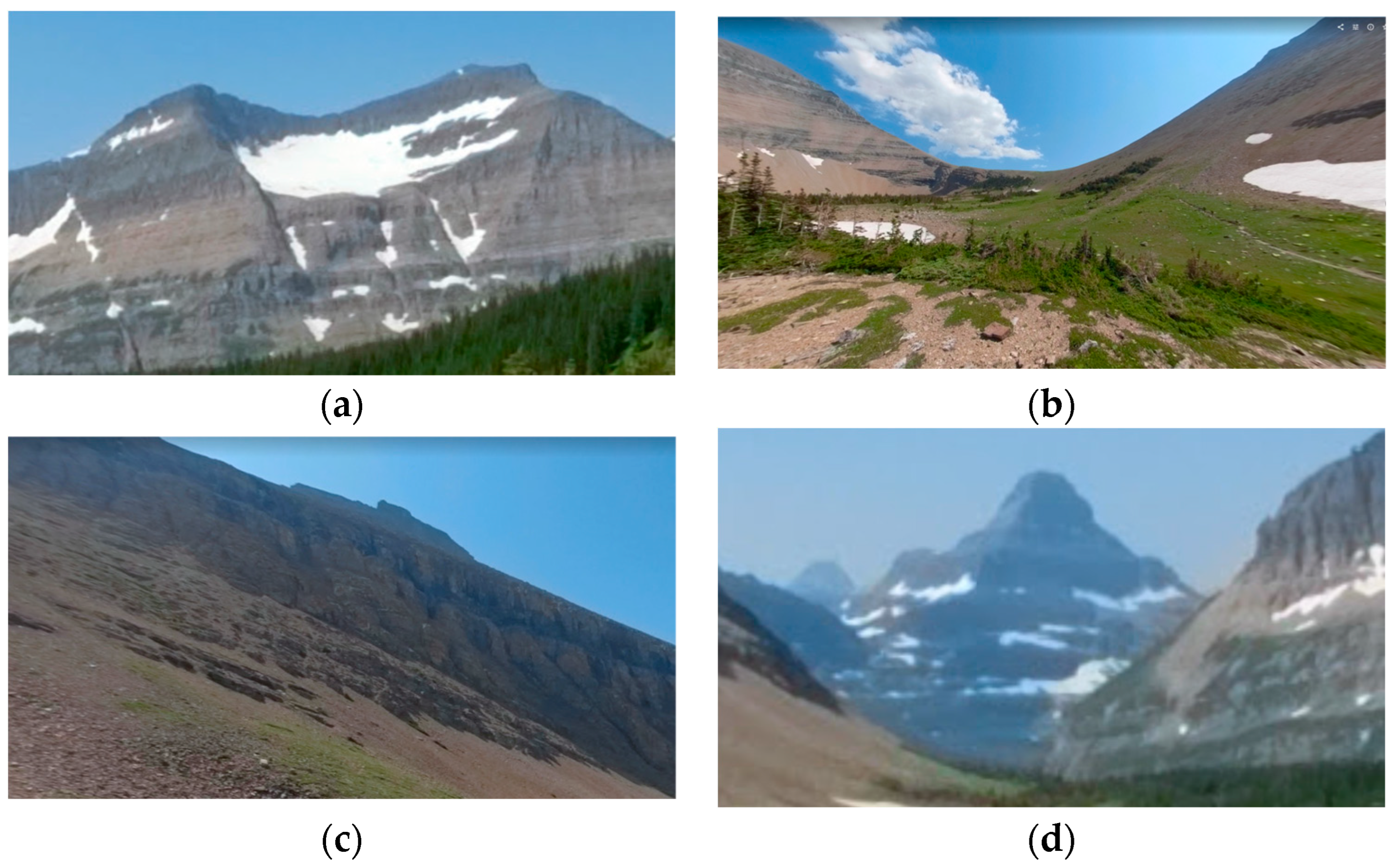
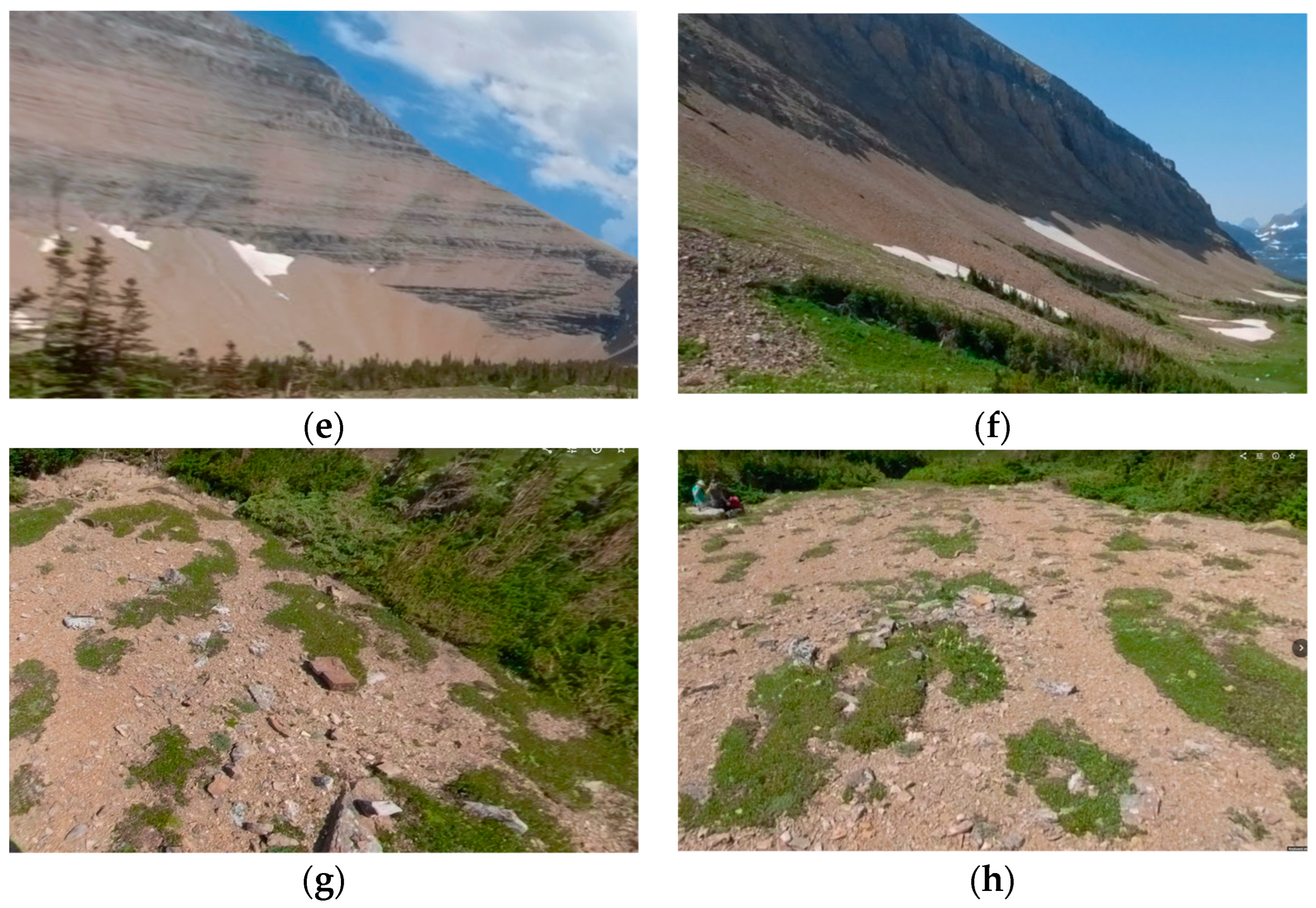
| TREE Conceptual Model for Physical Geography | ||
|---|---|---|
| Theory | Theoretical Claim | Thought Leaders |
| Social Constructivism | Learning occurs and knowledge exists through social interactions and the language shared between learning participants. | Vygotsky [17] |
| Conceptual Change | Learning occurs through conceptual development and change. It is impacted by prior knowledge which will influence how knowledge is integrated (or not) and what barriers may exist for learning. | Carey [18], Chinn and Brewer [19], Strike& Posner [20], Chi [21] |
| Academic Self-Concept | This is the self-perception of belonging in a discipline predicts persistence in a discipline. The perception of belonging is influenced by comparison to others, past experiences, judgements, mastery opportunities, and perceived value of the discipline. | Marsh and Shavelson [22], Bong and Skaalvik [23], Davis et al. [24] |
| Systemic Functional Linguistics | Language is contextual; teaching students to navigate those contexts is essential for learning and communicating knowledge. | Achugar et al. [25], Fang [26], Halliday and Matthiessen [27], Holliday et al. [28], Lemke [29], Markman [30] |
| Situated Cognition | Novice learners engage with a community of practice moving towards expertise through cognitive modeling, discourse, and reflection. Subject matter experts inform visual environments for learners to experience. Learning objectives are impacted by intentionally crafted landscapes and experiences. | Gibson [31], Lave and Wegener [32] |
| Experiential Learning | This is knowledge created through active interaction with an environment, discovery, and applying knowledge to new contexts. Learning integration occurs through a reflection of experiences. | Dewey [33], Healey and Jenkins [34], Kolb [35], Foster et al. [36], Wurdinger [37], Carver [38] |
| Construct | Construct Description | Thought Leaders |
| Sense of Place | Instructional experiences are enhanced by strengthening connections between people and place by leveraging emotions, experiences, senses, personal meanings, and attachments. | Moore and Graefe [39], Semken and Freeman [40], Semken et al. [41] |
| Spatial Thinking | Space is the framework through which we comprehend locations, natural phenomena and processes tied to geographic settings. The knowledge and comprehension of spatial information and associated concepts impact learning. | Kastens and Ishikawa [42], National Research Council [43], Uttal et al. [44] |
| Ludic Pedagogy | Fun, positivity, play, and playfulness can be integrated into learning environments to make them more enjoyable and improve student motivation, engagement, and performance. | Lauricella and Edmunds [45] |
| VRUI Order | Guiding Questions for Development | TREE-PG Constructs to Consider |
|---|---|---|
| Core: Learning Objectives | What should students learn? What is learning? | Social constructivism; conceptual change; systemic functional linguistics; spatial thinking |
| First VRUI: Photo Sphere Visual | What is the student experience? How do students see themselves? What builds belonging and connection? | Social constructivism; academic self-concept; sense of place; spatial thinking; Ludic Pedagogy |
| Second VRUI: Instructional Interventions | How do students learn? What role does prior knowledge play in learning? What are barriers to learning? How is learning assessed? | Social constructivism; conceptual change; academic self-concept; systemic functional linguistics; situated cognition; experiential learning; spatial thinking; Ludic Pedagogy |
| Third VRUI: Contextual Application | What is the application of knowledge? Why do we need to learn? How and why do students value learning and knowledge? | Academic self-concept; systemic functional linguistics; experiential learning; sense of place; spatial thinking; Ludic Pedagogy |
| VRUI Components: Core | Goal of Component | TREE-PG Guiding Construct | Assumptions of the Construct |
|---|---|---|---|
| Learning objectives | To articulate the intended learning | Social constructivism | Learning objectives build on other knowledge and information. Learning objectives will be impacted by social interactions. |
| Prior knowledge assumptions | To reduce the likelihood of misconception development | Conceptual change | Prior knowledge will impact learning. |
| Language used in learning objectives | To ensure language is being used consistently between the learner and discipline intention | Systemic functional linguistics | The meaning of language is dependent on context, tone, and audience. The interpretation of learning objectives may differ if the context, tone, or audience shifts. |
| Specific spatial representations and processes within the learning objectives | To develop cognitive strategies that demonstrate spatial thinking and orientation | Spatial thinking | Objectives must account for and reflect the student understanding of change in space and time, location, direction, orientation, patterns, and mechanistic process. These constructs are thematic to scientific understanding. |
| VRUI Components: First Order | Goal of Component | TREE-PG Guiding Construct | Assumptions of the Construct |
|---|---|---|---|
| Visual perception of interactive opportunities; curiosity zone | To analyze visual cues within a photo sphere for opportunities to engage learners through social interaction. | Social constructivism | Opportunities to translate thought to language will occur through social interaction. |
| Visual setting; mobility within the photo sphere | To evaluate a photo sphere for embedding information points for learning opportunities that promote inclusion and create a sense of belonging. | Academic self-concept | Learners’ success is influenced by their ability to see themselves as participants who belong in the learning space. |
| Visual setting | To assess a photo sphere for promoting emotional connections and feelings of attachment to a visual space. | Sense of place | Connection with and emotion towards the visual space supports development of place attachment. |
| Visual patterns: perceptions of distance, scale, direction, orientation; mechanism for how to look around | To develop skills in visualizing and spatial reasoning. | Spatial thinking | Accurate depiction of size, scale, and direction supports spatial fluency by providing opportunities to detect spatial patterns to support inference of driving natural processes. |
| Visual setting | To identify a compelling environment that invites engagement through interactions. | Ludic Pedagogy | Fun environments allow for exploration, freedom, and potential gamification. |
| VRUI Components: Second Order | Goal of Component | TREE-PG Construct | Relevant Recommendations from the Construct |
|---|---|---|---|
| Instructional strategy; social interactions | To collaborate with social partners in the learning environment to co-construct knowledge through shared language and interactions | Social constructivism | Learners must be provided opportunities to express thoughts through language with social partners in the learning environment. Knowledge is built and exists between social entities. |
| Instructional strategy; preconceptions | To identify and address learner preconceptions to achieve deeper comprehension of topics | Conceptual change | Preconceptions must be elicited, confronted, and resolved (if needed) to avoid barriers to learning. |
| Instructional strategy; learner perceptions | To develop a sense of belonging and help learners feel like valued members of the scientific learning community | Academic self-concept | Student perception of belonging will impact their ability to learn. During instructional interventions, students must feel like valued members of the scientific learning community. |
| Instructional strategy; language used | To differentiate between colloquial and technical language to prevent misunderstandings in the learning process | Systemic functional linguistics | Colloquial language may differ from technical language. A misunderstanding of language may impact the learning process. |
| Instructional strategy; context of the instruction | To apply knowledge across various contexts with guidance from experts | Situated cognition | Knowledge is context dependent. Instructional interventions should support novice learners with learning across multiple contexts with support of expert modeling. |
| Instructional strategy; reflection opportunities | To engage in activities and reflect to deepen their comprehension in knowledge acquisition | Experiential learning | Instructional interventions must provide meaningful experiences for students to engage in knowledge development. Reflection must occur as a mechanism for integrating and solidifying knowledge. |
| Instructional strategy; visual representations of knowledge | To use visualization, orientation, scale, and pattern to understand spatial relationships and natural processes | Spatial thinking | Instructional interventions should afford opportunities to depict size, scale, and direction. Knowledge is built when students detect patterns among spatial quantities to support inference of driving natural processes. |
| Instructional strategy; gamification | To create fun and playful activities to boost learner motivation, engagement, and persistence | Ludic Pedagogy | Fun, positivity, play, and playfulness should drive the development of instructional interventions to make the learning environment more enjoyable and improve student motivation, engagement, and performance. |
| VRUI Components: Third Order | Goal of Component | TREE-PG Construct | Relevant Recommendations from the Construct |
|---|---|---|---|
| Authentic contexts | To create activities that help learners feel they belong and are relevant to their interests | Academic self-concept | To persist in the discipline, students should feel like they belong. Extension, application, and transfer activities should reflect inclusive and authentic contexts that are meaningful and valued by the student. |
| Diversification of audience, context, and tone | To assist learners in practicing their knowledge for different audiences and situations | Systemic functional linguistics | Extension activities should support students with navigating changes in audience, context, and tone to enable the practice of translations of knowledge that will be required in authentic environments. |
| Reflective opportunities for knowledge extension and integration | To practice in various contexts and support learner reflection to apply what they have learned | Experiential learning | Students should be provided with opportunities to practice knowledge in differentiated contexts. Reflection must be guided and scaffolded to transfer knowledge. |
| Opportunities to predict and create explanations using spatial patterns | To apply spatial concepts to build scientific reasoning skills | Spatial thinking | Students should learn to use spatial concepts to develop normative scientific reasoning and knowledge. |
| Fun and gamified contexts | To create fun to boost students’ motivation to use what they learn | Ludic Pedagogy | Student value of and motivation to transfer knowledge is dependent on perception of fun. |
| Site of Viewshed | Glacial and Periglacial Physical Features | Examples to Support Students in Building Natural Hazard Assessment Skills |
|---|---|---|
| Preston Park, Siyeh Trail, GNP | Alpine glaciers, cirque glacier (Piegan Glacier, as a complement to Sexton Glacier), classic horn shape (Mount Reynolds), arete, and evidence of the following: frost-shattering, frost heaving, periglacial ground, insolation, solifluction, unsorted patterned ground, cryoturbation, sporadic permafrost, talus slopes, avalanche boulder tongues, and U-shaped valley, and U-shaped saddle. | Cirque glaciers are perched on the lip with the potential for rockfall and icefall. Rock avalanches. Potential for ice avalanches. Evidence of mountain glacier retreat. Changes in snow cover may impact plant or animal populations. Snow-blasting and plant winter injury. |
Disclaimer/Publisher’s Note: The statements, opinions and data contained in all publications are solely those of the individual author(s) and contributor(s) and not of MDPI and/or the editor(s). MDPI and/or the editor(s) disclaim responsibility for any injury to people or property resulting from any ideas, methods, instructions or products referred to in the content. |
© 2024 by the authors. Licensee MDPI, Basel, Switzerland. This article is an open access article distributed under the terms and conditions of the Creative Commons Attribution (CC BY) license (https://creativecommons.org/licenses/by/4.0/).
Share and Cite
Kelly, J.; Gielstra, D.; Moorman, L.; Schulze, U.; Cerveny, N.V.; Gielstra, J.; Swihart, R.J.; Ramsey, S.; Oberding, T.J.; Butler, D.R.; et al. Crafting Glacial Narratives: Virtual Exploration of Alpine Glacial and Periglacial Features in Preston Park, Glacier National Park, Montana, USA. Glacies 2024, 1, 57-79. https://doi.org/10.3390/glacies1010005
Kelly J, Gielstra D, Moorman L, Schulze U, Cerveny NV, Gielstra J, Swihart RJ, Ramsey S, Oberding TJ, Butler DR, et al. Crafting Glacial Narratives: Virtual Exploration of Alpine Glacial and Periglacial Features in Preston Park, Glacier National Park, Montana, USA. Glacies. 2024; 1(1):57-79. https://doi.org/10.3390/glacies1010005
Chicago/Turabian StyleKelly, Jacquelyn, Dianna Gielstra, Lynn Moorman, Uwe Schulze, Niccole V. Cerveny, Johan Gielstra, Rohana J. Swihart, Scott Ramsey, Tomáš J. Oberding, David R. Butler, and et al. 2024. "Crafting Glacial Narratives: Virtual Exploration of Alpine Glacial and Periglacial Features in Preston Park, Glacier National Park, Montana, USA" Glacies 1, no. 1: 57-79. https://doi.org/10.3390/glacies1010005
APA StyleKelly, J., Gielstra, D., Moorman, L., Schulze, U., Cerveny, N. V., Gielstra, J., Swihart, R. J., Ramsey, S., Oberding, T. J., Butler, D. R., & Guerrero, K. (2024). Crafting Glacial Narratives: Virtual Exploration of Alpine Glacial and Periglacial Features in Preston Park, Glacier National Park, Montana, USA. Glacies, 1(1), 57-79. https://doi.org/10.3390/glacies1010005







